Welcome to the Birds of Texas Field Guide‚ your essential companion for identifying and exploring the diverse avifauna of the Lone Star State. With detailed descriptions‚ vibrant photography‚ and expert insights‚ this guide simplifies birdwatching‚ helping enthusiasts of all levels discover and appreciate Texas’s rich birdlife.
Overview of the Field Guide
This field guide is a comprehensive resource for identifying and understanding the birds of Texas‚ featuring detailed descriptions and vibrant photography. Organized by color for ease of use‚ it allows readers to quickly locate species based on visual cues. With nearly 500 species covered‚ the guide provides nuanced information on habitat‚ behavior‚ and seasonal variations. Stan Tekiela’s expertise shines through in the full-page‚ high-quality images and insightful text. The guide also includes insets of winter plumage and juvenile stages‚ ensuring a complete understanding of each bird’s life cycle. Whether you’re a seasoned birder or just starting out‚ this guide offers a user-friendly approach to exploring Texas’s rich avifauna‚ making bird identification both simple and enjoyable.
Importance of Birdwatching in Texas
Birdwatching in Texas holds significant ecological‚ educational‚ and economic value. As a prime location for migratory birds‚ the state offers a unique opportunity to observe a diverse range of species‚ fostering environmental awareness and conservation efforts. Birding enthusiasts contribute to local economies through ecotourism‚ supporting parks‚ lodgings‚ and related services. Additionally‚ birdwatching promotes mental well-being and physical health by encouraging outdoor activities and connecting people with nature. The pursuit also aids in scientific research‚ as citizen observations provide valuable data on bird populations and habitats. Thus‚ birdwatching in Texas is not only a rewarding hobby but also a vital tool for conservation and community engagement‚ benefiting both individuals and the environment alike.
Structure and Organization of the Guide
The Birds of Texas Field Guide is thoughtfully structured to enhance user experience‚ featuring 170 species organized by plumage color for quick identification. Each entry includes vibrant‚ full-page photos‚ size comparisons‚ habitat details‚ and distinctive field marks; The guide also incorporates insights into behavior and seasonal variations‚ aiding in accurate identification. Additional resources‚ such as quick reference guides‚ help birders navigate the diverse avifauna efficiently. This organized approach ensures that both novice and experienced birdwatchers can effortlessly locate and learn about Texas’s bird species‚ making it an indispensable tool for anyone exploring the state’s rich birdlife.
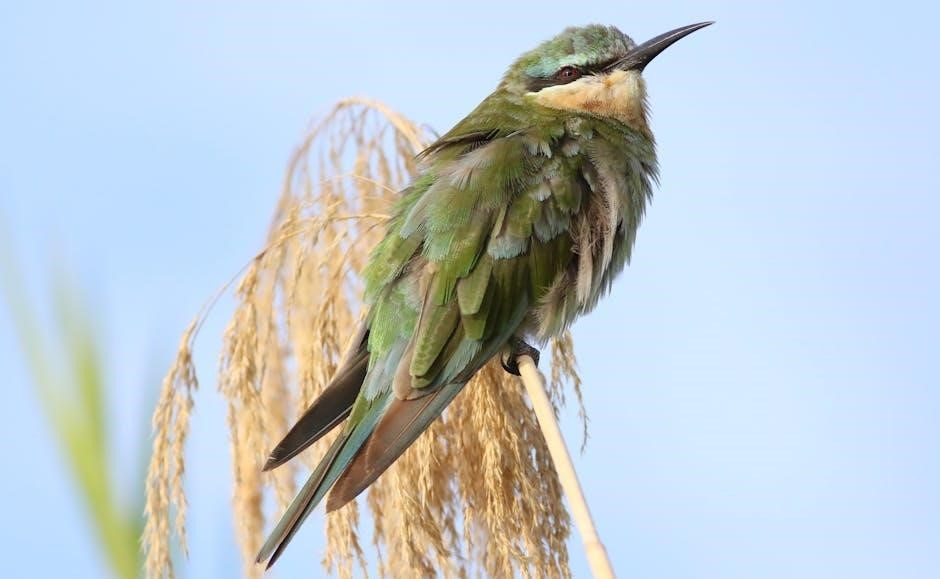
Diversity of Bird Species in Texas
Texas boasts an incredible variety of bird species‚ with nearly 500 documented types‚ ranging from year-round residents to migratory visitors‚ reflecting its unique geographical position and habitats.
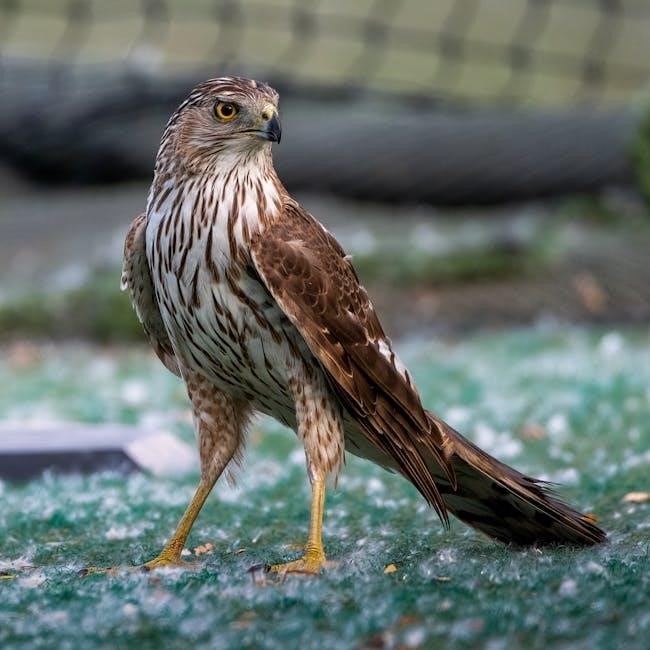
Geographical and Habitat Diversity
Texas’s vast geographical diversity creates a haven for birds‚ with its unique position at the crossroads of North America. The state’s varied landscapes‚ from arid deserts to lush forests and coastal wetlands‚ support a wide range of habitats. These environments attract a broad spectrum of bird species‚ including both migratory and resident birds. The Rio Grande Valley‚ known for its tropical influences‚ hosts exotic species‚ while the Panhandle’s grasslands and prairies are home to prairie-dwelling birds. Coastal regions‚ such as the Gulf Coast‚ are critical stopovers for migratory birds‚ offering abundant food and shelter. This diversity of habitats ensures that Texas remains a paradise for birdwatchers‚ with opportunities to observe species found nowhere else in the country.
Seasonal Variations in Bird Populations
Texas experiences dynamic seasonal changes in bird populations‚ driven by its strategic location along major migration routes. Spring and fall bring an influx of migratory species‚ while winter attracts birds escaping colder climates. Year-round residents‚ such as Northern Cardinals and Great-tailed Grackles‚ remain constant‚ adapting to the state’s varied habitats. Coastal areas like the Gulf Coast are particularly vital during migration‚ offering rest and refueling stops. Urban environments and backyard feeders also support wintering species‚ enhancing biodiversity. This seasonal variety makes Texas a captivating destination for birdwatchers‚ with each time of year offering unique sightings and opportunities to explore the state’s avian richness.
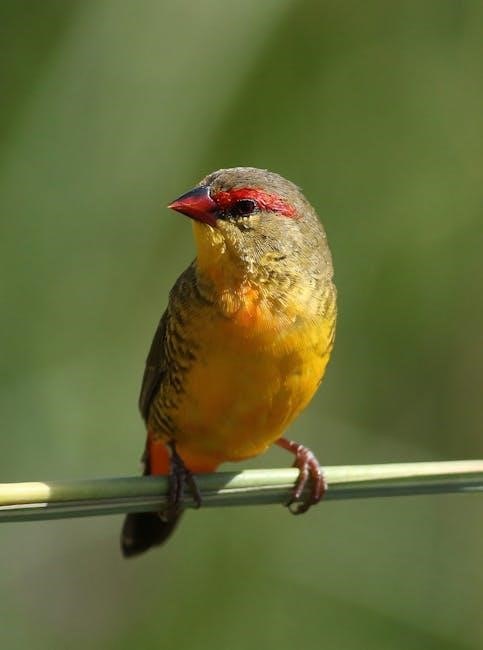
Endemic and Migratory Species
Texas is home to a mix of endemic and migratory bird species‚ creating a rich and dynamic avifauna. Endemic species‚ such as the Northern Mockingbird and Cactus Wren‚ thrive year-round in the state’s diverse habitats. Migratory birds‚ including warblers‚ tanagers‚ and orioles‚ flock to Texas during spring and fall‚ leveraging its strategic location along the Central and Mississippi Flyways. Wintering species like the American Goldfinch and Sandhill Crane further enrich the state’s birdlife. Notably‚ the endangered Whooping Crane migrates through Texas‚ highlighting the importance of conservation efforts. This blend of resident and migratory birds makes Texas a hotspot for birdwatching‚ offering a constantly changing tapestry of species to observe and study throughout the year.
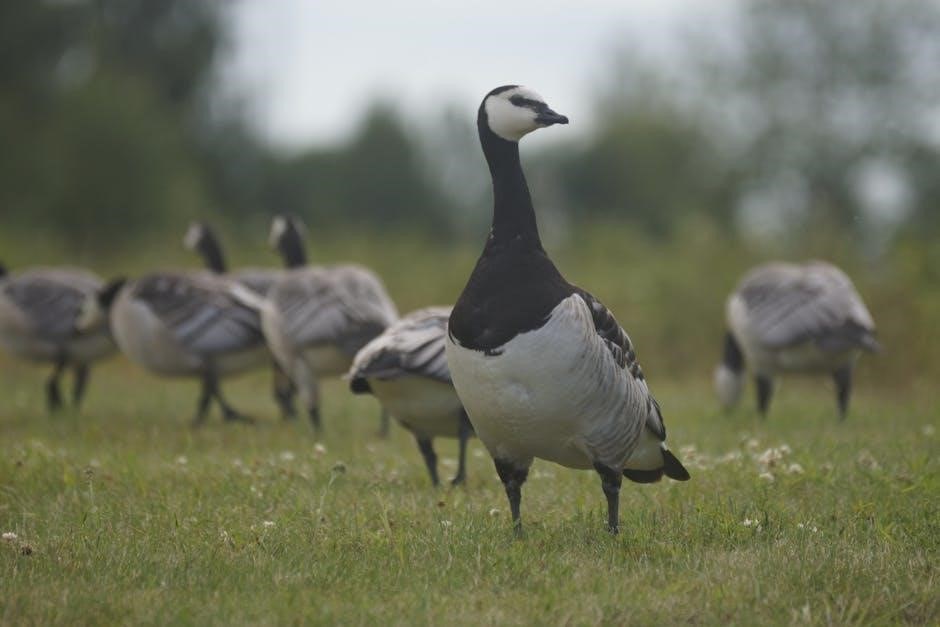
Popular Bird Species in Texas
Texas is renowned for its diverse birdlife‚ featuring iconic species like the Northern Mockingbird‚ Cactus Wren‚ and American Goldfinch. Wintering species such as Sandhill Cranes and waterfowl add to the state’s avian richness‚ attracting birders nationwide to explore its vibrant bird communities.
Year-Round Residents
Texas is home to a variety of bird species that remain in the state throughout the year‚ adapting seamlessly to its diverse climates and habitats. These year-round residents include iconic birds like the Northern Mockingbird‚ the state bird of Texas‚ as well as the American Crow‚ House Sparrow‚ and Mourning Dove. These species are highly adaptable‚ thriving in both urban and rural environments. Their presence provides consistent opportunities for birders to observe and study their behaviors‚ such as nesting‚ foraging‚ and social interactions. The Northern Mockingbird‚ known for its melodious songs‚ is a common sight in backyards and parks‚ while the American Crow is often seen in woodlands and open fields. These birds play a vital role in maintaining Texas’s ecological balance‚ making them a cornerstone of the state’s avifauna.
Wintering Species
Texas serves as a critical wintering ground for numerous bird species escaping harsher northern climates. During this period‚ the state welcomes a wide array of waterfowl‚ including ducks‚ herons‚ and hawks‚ which flock to its wetlands and coastal regions. These birds take advantage of the mild winters and abundant food sources‚ such as aquatic insects and seeds. Wintering species often form large congregations‚ creating spectacular sights for birders. The presence of these visitors highlights Texas’s role as a vital stopover in migratory routes‚ offering a temporary refuge before their return north. This seasonal influx enriches the state’s bird diversity‚ making winter a prime time for observing species that are rarely seen at other times of the year.
Rare and Exotic Sightings
Texas’s unique geographical location makes it a hotspot for rare and exotic bird sightings‚ particularly during migration seasons. Species like the Whooping Crane‚ a critically endangered bird‚ and the Broad-tailed Hummingbird‚ rarely seen outside the Rocky Mountains‚ have been spotted in the state. These sightings often occur in specific habitats‚ such as coastal wetlands or urban parks‚ where birds may temporarily settle. Birders should remain vigilant‚ as Texas’s diverse landscapes attract unexpected visitors. Rare sightings are often documented in local birding networks‚ providing enthusiasts with opportunities to witness these extraordinary birds. Such events underscore Texas’s importance as a migratory crossroads and a haven for avian diversity.
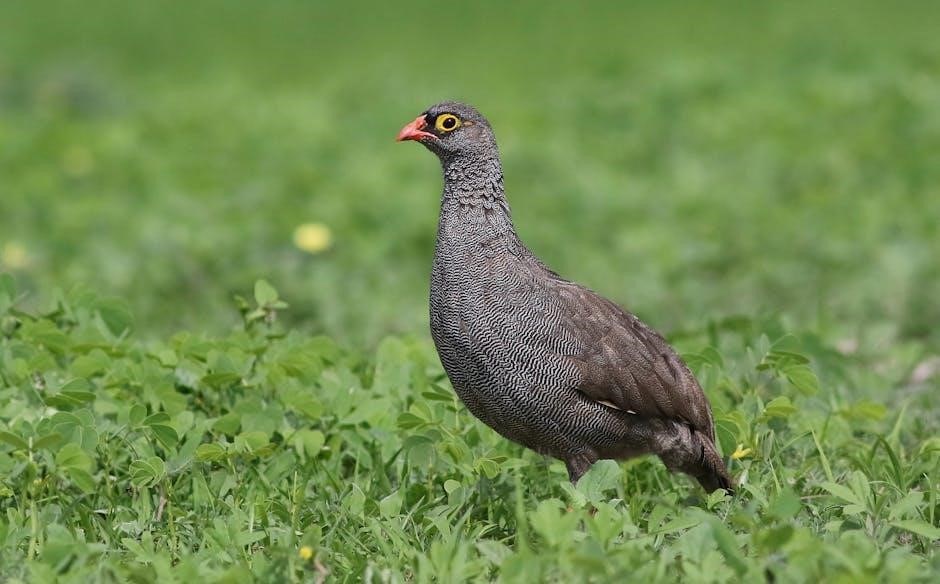
Bird Identification Tips
Identify Texas birds by plumage color‚ beak shape‚ size‚ and songs. Use field guides like Stan Tekiela’s for detailed descriptions and vibrant photos to aid recognition.
Using Plumage Color for Identification
Plumage color is a key tool for identifying Texas birds. Bright hues like yellow‚ red‚ or blue can quickly narrow down species. Stan Tekiela’s guide organizes birds by color‚ making it easier to locate species. Observe specific patterns‚ such as wing bars‚ cap colors‚ or rump patches. Seasonal changes in plumage‚ like molting‚ can alter appearances. Pay attention to subtle shades and combinations to differentiate similar species. This method is particularly effective for beginners‚ as color is often the first noticeable feature. However‚ remember that some birds may display duller tones or mimicry‚ so always consider behavior and habitat alongside color for accurate identification.
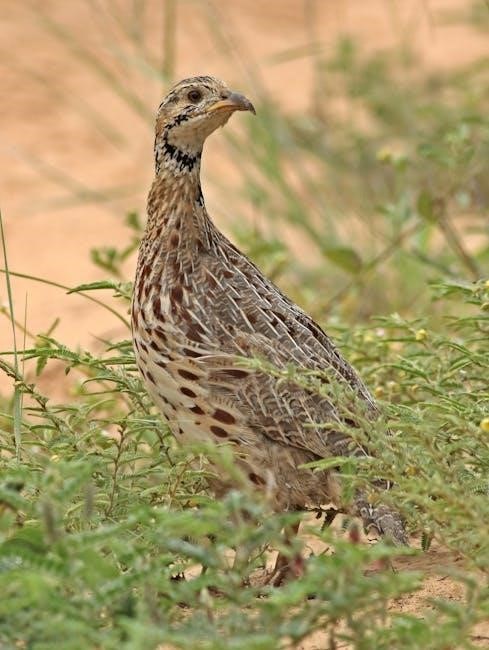
Recognizing Bird Calls and Songs
Bird calls and songs are crucial for identification‚ especially when sightings are fleeting or birds remain hidden. Many Texas species have distinctive vocalizations‚ such as the Northern Cardinal’s clear whistle or the Mourning Dove’s mournful coo. Learning these sounds can help enthusiasts pinpoint species quickly. Seasonal variations in songs‚ like breeding season melodies‚ provide additional clues. Pay attention to pitch‚ rhythm‚ and repetition patterns‚ as these often distinguish similar species. Portable recordings or apps can aid in learning and matching calls. Combining auditory cues with visual traits enhances identification accuracy. Mastering bird calls opens a new dimension to birdwatching‚ allowing observers to detect birds even when they remain out of sight.
Understanding Beak Shapes and Sizes
Bird beaks‚ or rostra‚ are adapted to specific dietary and environmental needs‚ making them a key identification feature. In Texas‚ diverse bird species exhibit a wide range of beak shapes and sizes. For instance‚ woodpeckers have strong‚ chisel-tipped beaks for drilling into wood‚ while hawks and eagles possess sharp‚ hooked beaks for tearing flesh. Waterfowl‚ like ducks‚ have broad‚ flat beaks for filtering water‚ and hummingbirds sport long‚ slender beaks for sipping nectar. Even slight variations‚ such as the curvature in a heron’s bill or the stubby shape of a sparrow’s beak‚ can help distinguish species. Observing these adaptations provides valuable clues for accurate bird identification in the field.
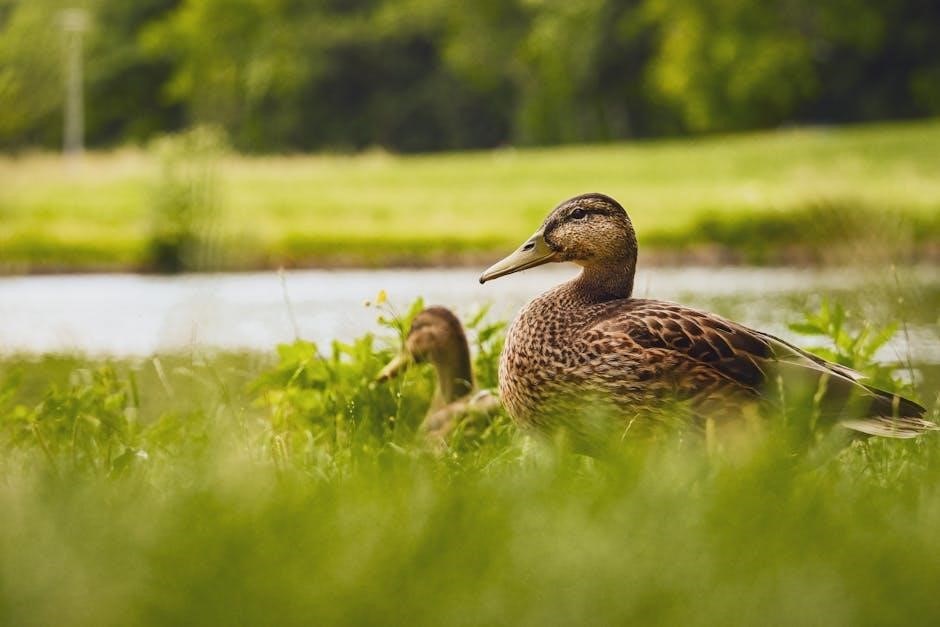
Habitat-Specific Birding in Texas
Texas’s diverse landscapes‚ from grasslands to wetlands‚ attract a wide variety of bird species. Birds adapt to agricultural fields and urban areas‚ offering unique sightings for enthusiasts.
Birds of the Grasslands and Prairies
The grasslands and prairies of Texas are home to a vibrant array of bird species adapted to open spaces. Common sightings include quail‚ meadowlarks‚ and birds of prey like hawks and kestrels. These areas attract ground-nesting birds such as the horned lark and vesper sparrow‚ which rely on tall grasses for shelter. The northern bobwhite‚ a iconic grassland bird‚ is often heard calling in these regions. However‚ habitat loss due to agricultural expansion has impacted many species. Conservation efforts focus on preserving native grasslands to protect these birds and their unique ecosystems. Birders can explore prairie landscapes to spot these resilient species thriving in Texas’s open country.
Birds of the Forests and Woodlands
Texas’s forests and woodlands harbor a rich diversity of birdlife‚ with species adapting to the dense canopies and shaded habitats. Woodpeckers‚ such as the red-headed and pileated‚ are common‚ while owls like the barred owl thrive in these environments. The eastern wood-pewee and yellow-throated warbler are among the songbirds that inhabit the tree layers. Forests also provide refuge for migratory birds during their journeys. The structure of these ecosystems‚ with towering trees and understory vegetation‚ supports a variety of nesting and foraging behaviors. Conservation efforts focus on maintaining these habitats to ensure the survival of these species. Birders exploring Texas’s forests can discover a wealth of avian life‚ from the vibrant plumage of tanagers to the stealthy movements of forest raptors.
Birds of the Wetlands and Coastal Areas
Texas’s wetlands and coastal regions are vital habitats for a wide array of bird species‚ including herons‚ egrets‚ and shorebirds. The roseate spoonbill‚ with its vibrant pink plumage‚ and the American avocet‚ known for its unique feeding behavior‚ are among the standout species. These areas serve as critical stopovers for migratory birds‚ offering refuge and feeding grounds. Year-round residents like the clapper rail and marsh wren thrive in the dense vegetation of marshes‚ while migratory species such as ducks‚ geese‚ and songbirds rely on these habitats during their journeys. The mix of brackish wetlands‚ mangroves‚ and sandy coastlines supports a rich avian diversity‚ making these regions a paradise for birdwatchers and a cornerstone of Texas’s ecological balance.
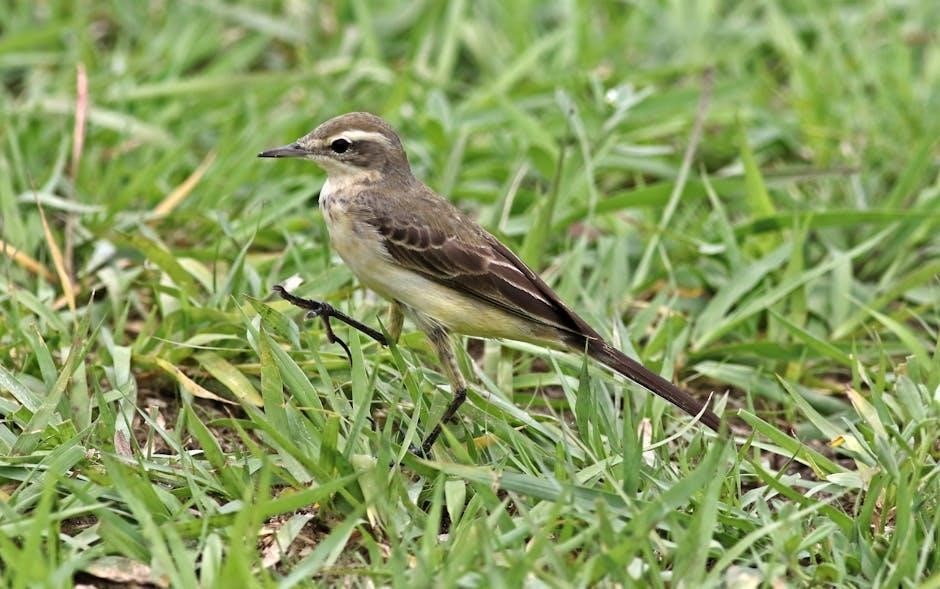
Birding Locations and Hotspots
Explore Texas’s premier birding destinations‚ from coastal wetlands to urban parks‚ offering diverse habitats that attract both native and migratory species‚ making each spot a unique haven for enthusiasts.
State and National Parks
State and national parks in Texas are renowned for their rich birdlife‚ offering diverse habitats that attract a wide variety of species. Big Bend National Park‚ with its vast desert landscapes and Rio Grande River‚ is a hotspot for spotting birds like the Painted Bunting and Gray Hawk. Bentsen-Rio Grande Valley State Park‚ located in the subtropical Rio Grande Valley‚ is a critical stopover for migratory birds‚ hosting species such as the Altamira Oriole and Northern Beardless-Tyrannulet. These parks provide well-maintained trails‚ observation decks‚ and educational programs‚ making them ideal for both experienced birders and newcomers. Their strategic locations along migratory routes ensure a dynamic and ever-changing array of bird species throughout the year.
Urban Birding Locations
Urban areas in Texas offer surprising opportunities for birdwatching‚ with cities like Houston‚ Dallas‚ and San Antonio harboring diverse birdlife. Green spaces such as parks‚ gardens‚ and even parking lots provide habitats for species like the Great Egret and Red-winged Blackbird. The concept of “parking lot birding” has gained popularity‚ encouraging birders to explore urban environments. Backyard feeders and water features attract year-round residents‚ including Northern Cardinals and Blue Jays. Urban areas also serve as crucial stopovers for migratory birds‚ offering refuge in bustling cities. This unique blend of natural and built environments makes urban birding a rewarding experience‚ showcasing how wildlife adapts to human-modified landscapes. Whether in a quiet neighborhood or a city center‚ urban Texas is teeming with avian life waiting to be discovered.
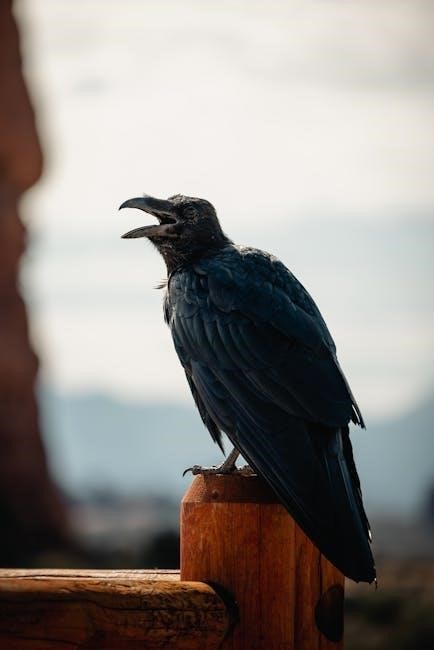
Conservation Efforts and Threats
Bird populations face threats like habitat loss‚ urban expansion‚ and climate change. Conservation efforts are crucial to protect these species and their ecosystems for future generations.
Threats to Bird Populations
Bird populations in Texas face numerous threats‚ including habitat loss due to urban expansion and agricultural changes. Climate change disrupts ecosystems‚ affecting food supplies and nesting patterns. Pollution‚ pesticides‚ and invasive species further endanger birdlife. Grasslands and wetlands‚ critical habitats‚ are shrinking‚ forcing birds to adapt to fragmented environments. Additionally‚ human activities like deforestation and coastal development threaten migratory and endemic species. These challenges highlight the urgent need for conservation efforts to protect Texas’s avifauna and their habitats‚ ensuring the survival of these vital species for future generations.
Local and National Conservation Programs
Local and national conservation programs play a vital role in protecting Texas’s bird populations. Organizations like the Texas Parks and Wildlife Department and the Audubon Society implement initiatives to restore habitats and promote biodiversity. National programs‚ such as the Migratory Bird Treaty Act and the North American Bird Conservation Initiative‚ provide frameworks for protecting migratory species. Community-driven efforts‚ including bird-friendly city certifications and wetland restoration projects‚ engage residents in conservation. These programs often collaborate with private landowners to create bird-friendly habitats. Public education campaigns also raise awareness about the importance of conservation and how individuals can contribute to protecting avifauna. Together‚ these efforts aim to safeguard Texas’s rich bird diversity for future generations.
Personal Contributions to Bird Conservation
Individuals play a crucial role in bird conservation through simple yet impactful actions. Creating bird-friendly habitats by planting native vegetation and reducing pesticide use supports local species. Installing nesting boxes or bird feeders can aid breeding and survival. Participating in citizen science projects‚ such as bird counts or surveys‚ helps researchers understand population trends. Reducing plastic use and conserving water also benefit birds. Supporting local conservation organizations through memberships or volunteering strengthens community efforts. Even spreading awareness about bird conservation through education and advocacy makes a difference. Every small action contributes to protecting Texas’s avifauna and ensuring their survival for future generations. By taking personal responsibility‚ individuals can significantly impact bird conservation efforts.